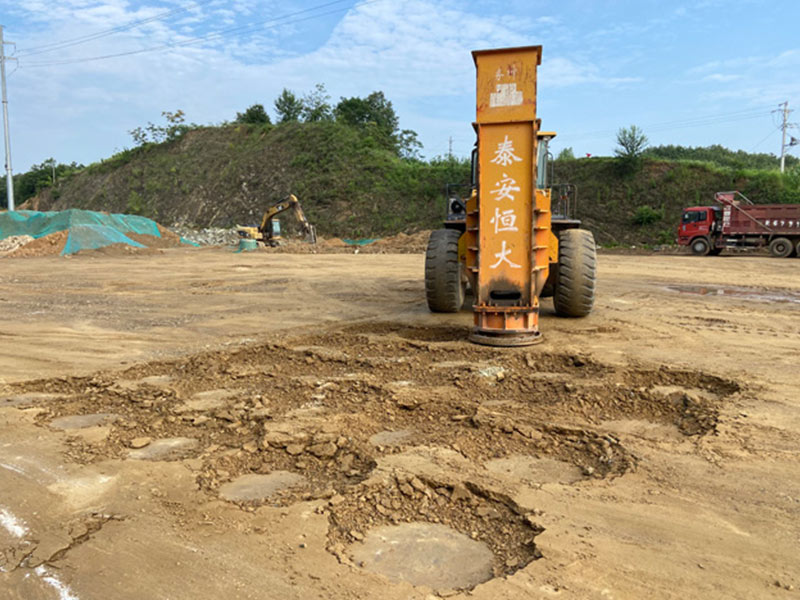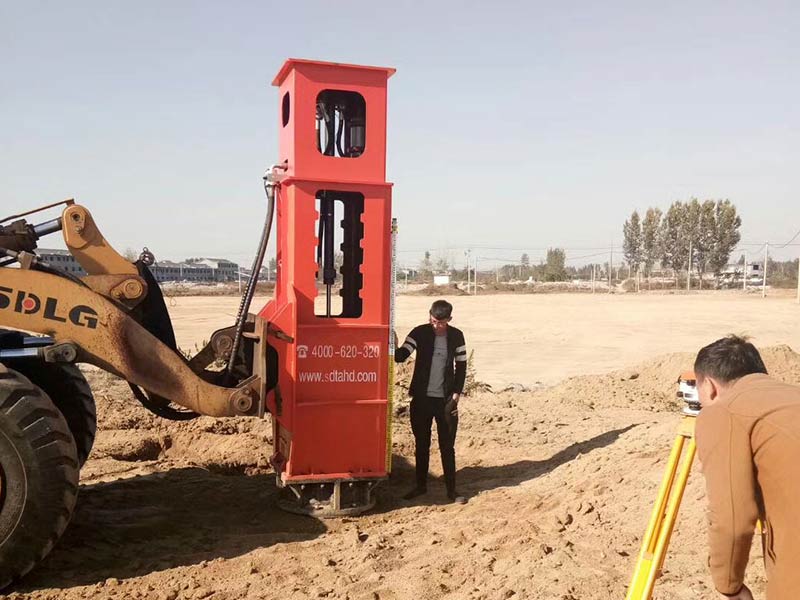Rapid Impact Compaction is a new type of high-efficiency hydraulic tamping machinery, with strong maneuverability, can regulate ramming energy, especially suitable for small area of tamping operation requirements. Fills the gap between traditional surface compaction techniques such as rolling, vibratory compaction and traditional forced compaction techniques.

So, what is the working principle of Rapid Impact Compaction?
Under the action of gravity and hydraulic pressure, the heavy rammer hammer is compacted on the packing material, and the rapid up-and-down reciprocating stroke is realized under the action of the hydraulic cylinder, and under the traction of the loader working device, the motor flexible compaction of different positions is carried out accurately and quickly, so as to meet the requirements of single-point or continuous compaction of the compaction working area.
What are the advantages of Rapid Impact Compactors? Compared with the traditional surface compaction technology (roller compaction, etc.), its penetration ability is strong and uniform, and it is not easy to form a surface harden in the basic processing, which can obtain uniform compactness in a large depth range. The Rapid Impact Compactor can realize the overall compaction of the post-fill layer, improve the production efficiency, and reduce or avoid the phenomenon of interlayer slippage and sharing that may be caused by the layer compaction technology.

The Rapid Impact Compaction can handle the foundation of the existing large-scale compaction or tampling machinery such as bridge culverts, bridge pier periphery, high-filled roadbeds, slopes, ditches, compaction machinery turning areas, roadless areas, etc., and solve the problems of early damage to the pavement, abutment jumping and slope slippage after the partial foundation of important facilities such as highways sinks.
The performance of the Rapid Impact Compaction is between the strong rammer and the roller, which can be compacted close to the wall, and the lateral thrust is small, avoiding the destructive force caused by the construction of the strong ramming. The Rapid Impact Compaction has simple process steps, fast construction speed and reliable technology, which is applicable and effective for solving the common problem of settlement quality after high-grade highway backfilling, and the processing back-loading capacity and stability have been greatly improved!

Specifically, you can follow the following steps to perform the Rapid impact compaction test:
Test preparation: Before compaction, the subgrade section of the test road must be inspected according to the compaction standards and flatness required by the design. The arrangement of impact tampons can only be carried out after passing the test. For the subgrade part of the tamping test, it should be crushed and leveled according to the site before the pre-construction project is compacted. When the surface of the filler layer is dry, an appropriate amount of water should be sprayed to prevent the surface from flying dust and affecting the energy transfer to the deep layers.
Tamping layout: The tamping points are placed on the subgrade that has been built and tested according to the compaction standards required by the design, marked and numbered with white or gray, and then the initial elevation of each point is measured according to the number. Place the hydraulic tamping machine in place and align the ramming hammer with the point according to the measured lofting position.








